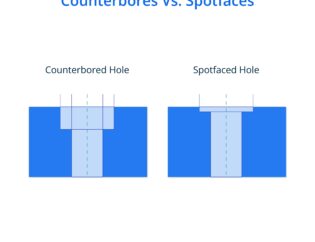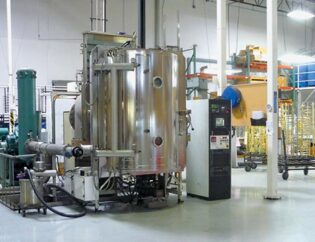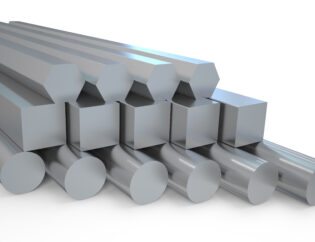Machining design is a critical aspect of manufacturing that directly influences product quality, efficiency, and cost-effectiveness. Understanding the principles of machining design enables engineers and designers to create components that are not only functional but also optimized for production. This guide delves into the intricacies of machining design, offering insights that can enhance your design process.
Readers can expect to learn about key machining processes, material selection, and design considerations that impact manufacturability. We will explore best practices for creating designs that minimize waste and reduce production time. Additionally, the guide will cover common pitfalls to avoid, ensuring that your designs are both innovative and practical.
By the end of this guide, you will have a comprehensive understanding of machining design principles and their application in real-world scenarios. Whether you are a seasoned professional or a newcomer to the field, this resource will equip you with the knowledge needed to elevate your machining design skills and contribute to successful manufacturing outcomes.
Design for CNC Machining: A Comprehensive Guide
CNC (computer numerical control) machining is a robust and widely used manufacturing process due to its very high production capabilities and range of possibilities. Machine shops rely on this technology to create strong and accurate products with simple or complex geometries from a broad range of compatible materials such as plastic, metals, ceramic, wood, composites, and even foam. However, the design for CNC machining demands accuracy and precision to attain quality designs. Thus, it is essential to adhere to the basic rule of thumb and design guidelines that apply to CNC machining of standard features in CNC machined parts. This guide explores the basics of CNC machining design and best practices for different CNC operations.
Technical Features of CNC Machining
CNC machining offers several technical features that enhance its efficiency and effectiveness. Below is a comparison table highlighting these features:
| Feature | Description | Benefits |
|---|---|---|
| Precision | CNC machines can achieve tolerances of ±0.001 inches or better. | High accuracy in part dimensions. |
| Automation | CNC machining is automated, reducing human error. | Consistent quality and reduced labor costs. |
| Versatility | Capable of machining various materials including metals, plastics, and composites. | Wide application across industries. |
| Complex Geometries | Can produce intricate designs that are difficult to achieve manually. | Greater design freedom and innovation. |
| Scalability | Suitable for both small batch and mass production. | Flexibility in production volume. |
| Repeatability | CNC machines can replicate the same part multiple times with high fidelity. | Ensures uniformity in production. |
Types of CNC Machining
CNC machining encompasses various types, each suited for specific applications. Below is a comparison table of the different types of CNC machining:
| Type | Description | Applications |
|---|---|---|
| CNC Milling | Uses rotating cutting tools to remove material from a workpiece. | Ideal for complex shapes and features. |
| CNC Turning | Rotates the workpiece against a stationary cutting tool to create cylindrical parts. | Common in producing shafts and fittings. |
| CNC Drilling | Creates holes in a workpiece using drill bits. | Used for creating precise holes. |
| CNC Laser Cutting | Utilizes a laser to cut materials with high precision. | Effective for thin materials and intricate designs. |
| CNC Waterjet Cutting | Uses high-pressure water jets to cut through materials. | Suitable for thick materials and delicate cuts. |
Best Practices for CNC Machining Design
When designing parts for CNC machining, it is crucial to follow best practices to ensure manufacturability and efficiency. Here are some key considerations:
1. Holes and Threads
- Use standard drill bit sizes to simplify production.
- Specify the correct depth and diameter for threaded holes to ensure proper engagement.
2. Internal Edges
- Maintain a minimum radius on internal corners to avoid tool breakage.
- Use T-bone undercuts for sharp internal corners.
3. Cavities and Pockets
- Design cavities with a depth-to-width ratio of no more than 3:1 to prevent tool deflection.
- Use variable cavity depths for larger features.
4. Material Selection
- Choose materials based on the part’s intended use and required properties.
- Consider the machinability of materials to optimize production efficiency.
5. Surface Finishes
- Specify surface finishes based on the part’s functional and aesthetic requirements.
- Common finishes include bead blasting, anodizing, and powder coating.
Importance of CNC Design for Manufacturability
Design for Manufacturability (DFM) is essential in CNC machining as it helps optimize the manufacturing process. By considering factors such as tool selection, cutting parameters, and machine capacity, manufacturers can reduce cycle times and improve productivity. This approach not only minimizes production costs but also enhances the overall quality of the final product.
Conclusion
CNC machining is a powerful manufacturing process that requires careful design considerations to achieve optimal results. By understanding the technical features, types, and best practices associated with CNC machining, designers can create parts that are not only manufacturable but also meet the high standards of quality and precision demanded in today’s industries. Websites like www.machinedesign.com, www.hubs.com, www.rapiddirect.com, and at-machining.com provide valuable resources for further exploration of CNC machining techniques and services.
FAQs
1. What is CNC machining?
CNC machining is a manufacturing process that uses computer-controlled machines to create parts with high precision and accuracy from various materials.
2. What materials can be used in CNC machining?
CNC machining can work with metals, plastics, ceramics, wood, composites, and foam, making it versatile for different applications.
3. How does CNC machining ensure precision?
CNC machines operate using G-code, which dictates the exact movements and operations of the cutting tools, allowing for tight tolerances and repeatability.
4. What are the advantages of using CNC machining?
CNC machining offers benefits such as high precision, automation, versatility, scalability, and the ability to produce complex geometries.
5. How can I improve my CNC design for manufacturability?
To improve DFM, consider using standard sizes, optimizing material usage, and following best practices for features like holes, threads, and surface finishes.






